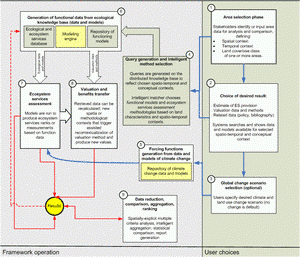"Ecosystem services are often ignored because few people understand the value of what they do. ARIES is one of many new resources being designed to change that. For now, it maps and models the flow of services and takes stock of their impacts. The next step is to turn that into an economic evaluation.
The Chehalis River Basin in Washington State is no stranger to catastrophic flooding. In 2007, a flood in the region caused $166 million in damage—to everything from agricultural lands to personal property to transportation systems. With this type of risk, the surrounding communities realized they needed to understand how flood protection functioned in the Basin.
Working with the Chehalis River Basin Flood Authority, Earth Economics took on the task in 2010 to identify and estimate the value of this environmental service as well as model the landscape's ecosystem service provisioners and beneficiaries. Earth Economics used a new modeling software program called Artificial Intelligence for Ecosystem Services (ARIES) to help build landscape maps and models. The Chehalis River Basin flood protection models became ARIES first case study.
ARIES uses the best available scientific data to build ecosystem service models and maps, which in turn help environmental asset decisions to be better informed, more effective, less costly and less contentious. The application was developed by a team of scientists, environmental modelers and economists led by Ferdinando Villa, a researcher at the Basque Center for Climate Change with grant funding from the National Science Foundation (NSF) of the Gund Institute at the University of Vermont.
What Does it Do?
Essentially, ARIES produces models and maps that illustrate the supply and demand of the ecosystem service, highlighting landscape factors that may inhibit the delivery. In other words, in addition to identifying the service source, the application identifies how and where the ecosystem services are being used and whether there is an excess or need.
Read the rest of the article here.
